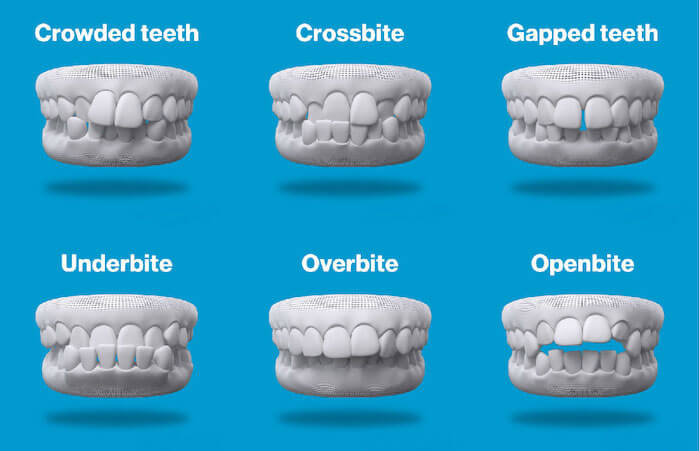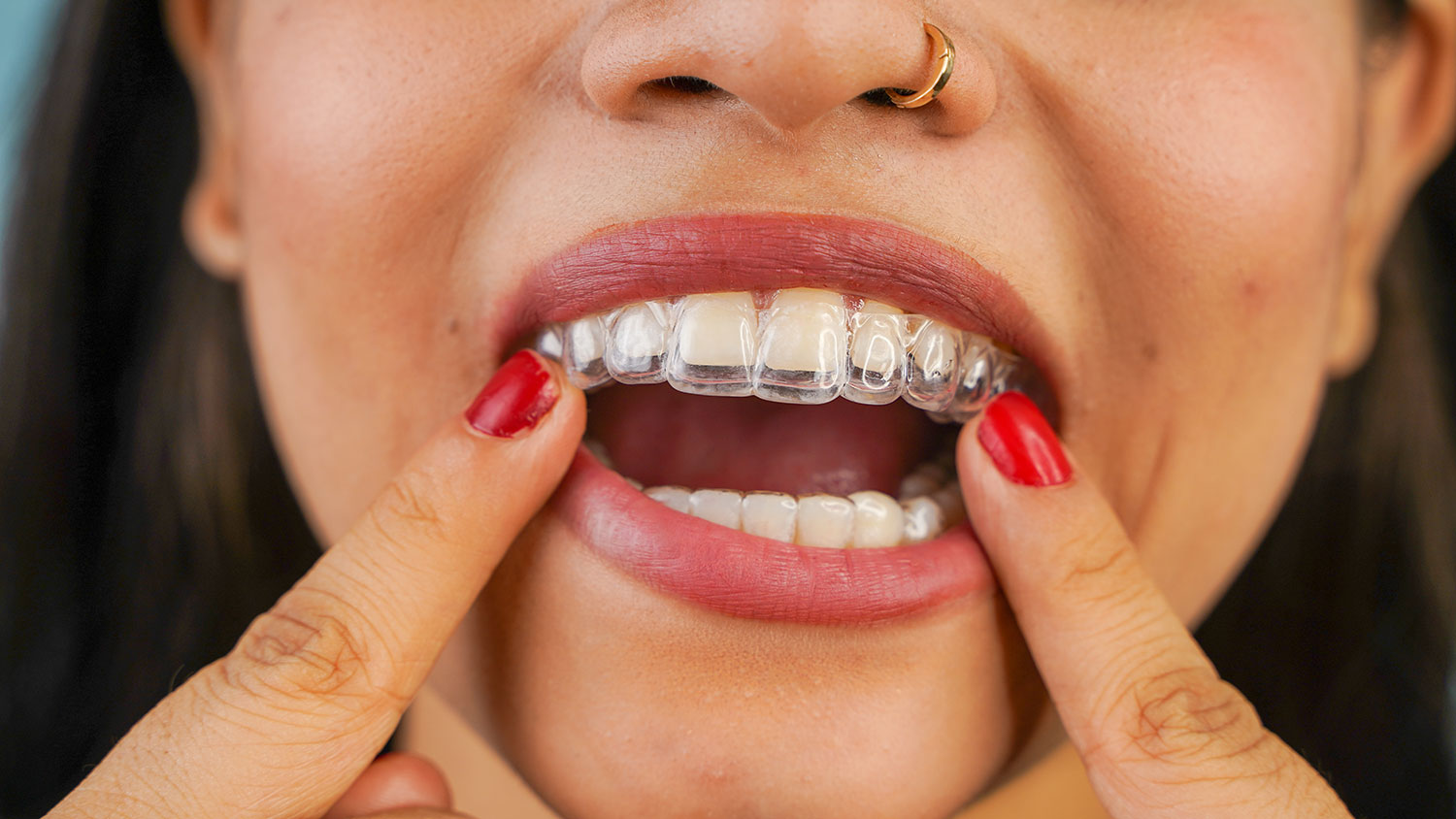How Invisalign Functions: Your Overview to Clear Aligners and Their Effectiveness
How Invisalign Functions: Your Overview to Clear Aligners and Their Effectiveness
Blog Article
Invisalign vs. Conventional Dental braces: Which Alternative Is Right for You?
When thinking about orthodontic therapy, the selection in between Invisalign and traditional braces provides a number of vital factors that merit cautious analysis. Invisalign supplies a very discreet alternative with removable aligners, while conventional braces supply a much more noticeable yet reliable remedy for extreme imbalance. Each option encompasses distinct benefits and drawbacks connected to aesthetics, comfort, treatment duration, and cost. Understanding these subtleties is crucial for making an educated choice that straightens with your individual choices and way of life. The concern stays: which choice will best meet your orthodontic demands and assumptions?
Introduction of Treatment Choices

In contrast, standard dental braces consist of steel braces and wires that are bound to the teeth. This approach applies constant stress over time to accomplish positioning. While efficient for complex orthodontic concerns, conventional braces call for normal gos to for adjustments and can pose challenges in preserving dental health due to the difficulty of cleaning up about braces and cords.
Both options have their values, and the selection often hinges on certain oral problems, way of living choices, and person compliance. Eventually, speaking with an orthodontic expert is critical for determining the most suitable treatment plan tailored to individual needs. Understanding the nuances of each option can significantly influence the overall success of orthodontic therapy.
Visual Factors To Consider
A significant factor affecting the selection between Invisalign and traditional dental braces is the aesthetic allure each therapy provides. Invisalign aligners are crafted from clear plastic, making them practically invisible when put on.
In contrast, traditional dental braces contain steel brackets and cords, which can be much more noticeable. While improvements in orthodontic innovation have resulted in the growth of smaller brackets and colored elastics, typical dental braces still preserve a more noticeable profile. For some people, the exposure of dental braces may hinder them from looking for necessary treatment.
Inevitably, the choice in between Invisalign and traditional dental braces might rest on individual choices concerning visual appeals. People who prioritize discernment frequently favor Invisalign, while those that are less concerned about visibility may select typical braces. Comprehending the visual implications of each option is vital for making an informed decision that lines up with one's way of life and choices.
Convenience and Convenience

In terms of benefit, Invisalign aligners are removable, making it possible for people to appreciate their favorite foods without restriction and keep ideal oral health. Cleaning and flossing are simplified, as the aligners can be taken out throughout these routines, whereas traditional dental braces need careful steering around cords and brackets.
In comparison, traditional braces demand regular modifications, making them much less practical for those with active schedules. Generally, the convenience and benefit of Invisalign make it an enticing choice for numerous individuals looking for orthodontic treatment.
Treatment Period and Effectiveness
While both Invisalign and standard dental braces work in fixing oral imbalances, the period of treatment can vary substantially in between both options. Commonly, Invisalign therapy can take anywhere from 12 to 18 months, depending on the complexity of the situation. The clear aligners function by progressively changing teeth right into their desired positions, and routine follow-ups with an orthodontist assistance make certain progression remains on track.
In contrast, conventional braces commonly call for a longer dedication, generally varying from 18 months to 3 years. This results from their set nature and using braces and cords, which can be more effective for intricate instances and extreme imbalances (Invisalign). The therapy efficiency of standard dental braces is well-documented, as they enable for accurate modifications and greater control over tooth movement
Ultimately, the selection in between Invisalign and typical dental braces might depend upon both the expected treatment duration and the details oral concerns available. Consulting with an orthodontist is important, as they can offer tailored recommendations based upon private requirements, guaranteeing the chosen approach straightens with preferred outcomes and timeframes.
Cost Contrast and Insurance Policy Choices
Price plays a significant role in the decision-making process for people taking into consideration orthodontic therapy, whether choosing Invisalign or traditional dental braces. Typically, the cost of Invisalign arrays from $3,000 to $8,000, while conventional dental braces normally cost in between $2,000 and $6,000. Elements affecting these expenses include the intricacy of the case, the Go Here period of treatment, and geographical place.
Lots of oral insurance plans supply partial insurance coverage for orthodontic treatments, however the specifics can differ extensively. Generally, conventional dental braces might be more often covered by insurance coverage strategies contrasted go to this site to Invisalign, which some insurers categorize as a cosmetic procedure.
In addition, numerous orthodontic practices offer flexible layaway plan, making both therapy alternatives more easily accessible. People should ask about prospective funding alternatives and price cuts for ahead of time settlements. Reviewing the total cost, including insurance benefits and payment plans, is essential for making a notified decision that aligns with both aesthetic choices and spending plan factors to consider.

Conclusion
In recap, the selection in between Invisalign and typical dental braces depends upon several elements, including aesthetic choices, convenience, therapy duration, and expense. Invisalign provides a discreet, detachable alternative that promotes dental health and dietary versatility, while conventional dental braces may be preferable for intricate oral problems and usually come at a lower cost point. Eventually, consultation with an orthodontist is necessary to assess specific circumstances and establish one of the most suitable treatment alternative for accomplishing optimal oral positioning.
When considering orthodontic therapy, the option in between Invisalign and standard braces offers a number of vital aspects that merit mindful assessment.Contrasting Invisalign and standard dental braces reveals distinctive treatment alternatives for orthodontic adjustment.While both Invisalign and traditional braces are effective in remedying oral misalignments, the period of treatment can differ considerably in between the two choices.Price plays a considerable duty in the decision-making process for people taking into consideration orthodontic treatment, whether deciding for Invisalign or traditional dental braces.In recap, the choice in between Invisalign and traditional braces pivots on numerous elements, consisting of visual preferences, comfort, therapy period, and cost.
Report this page